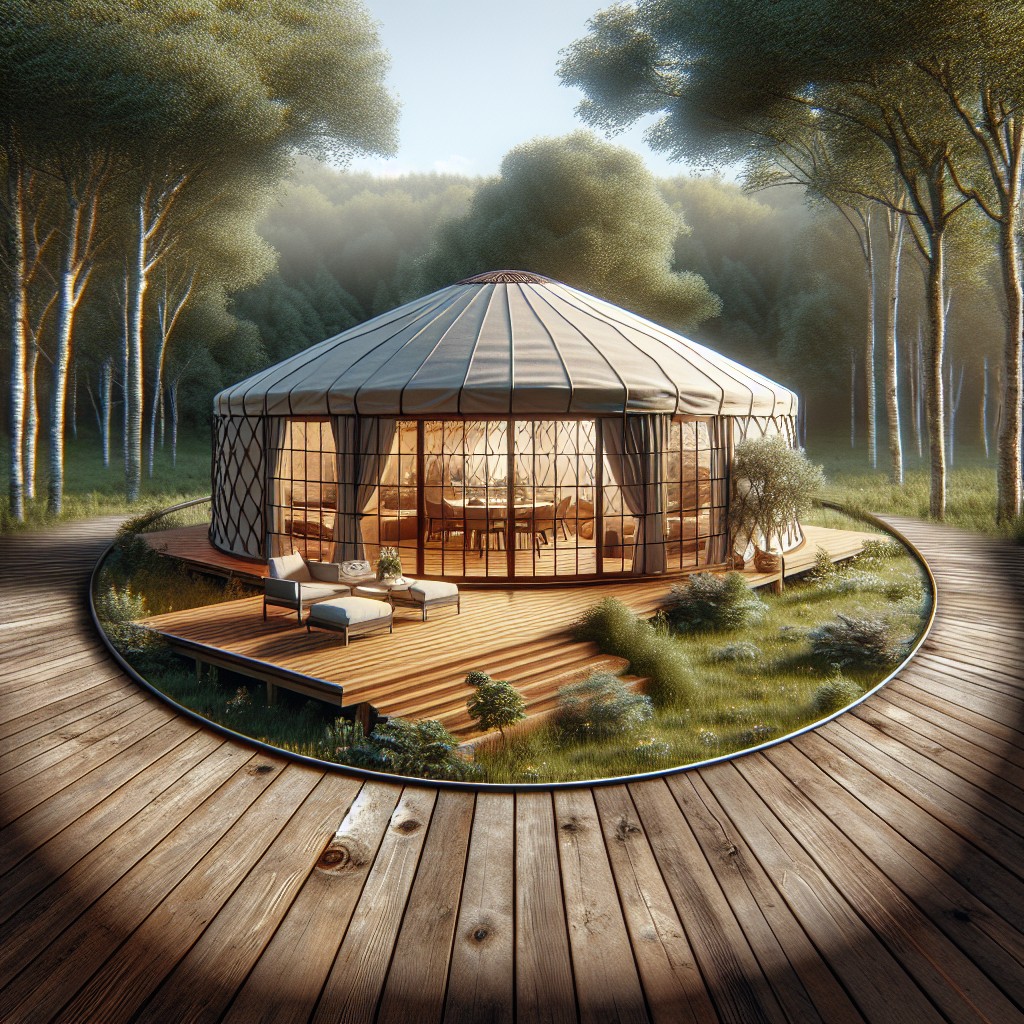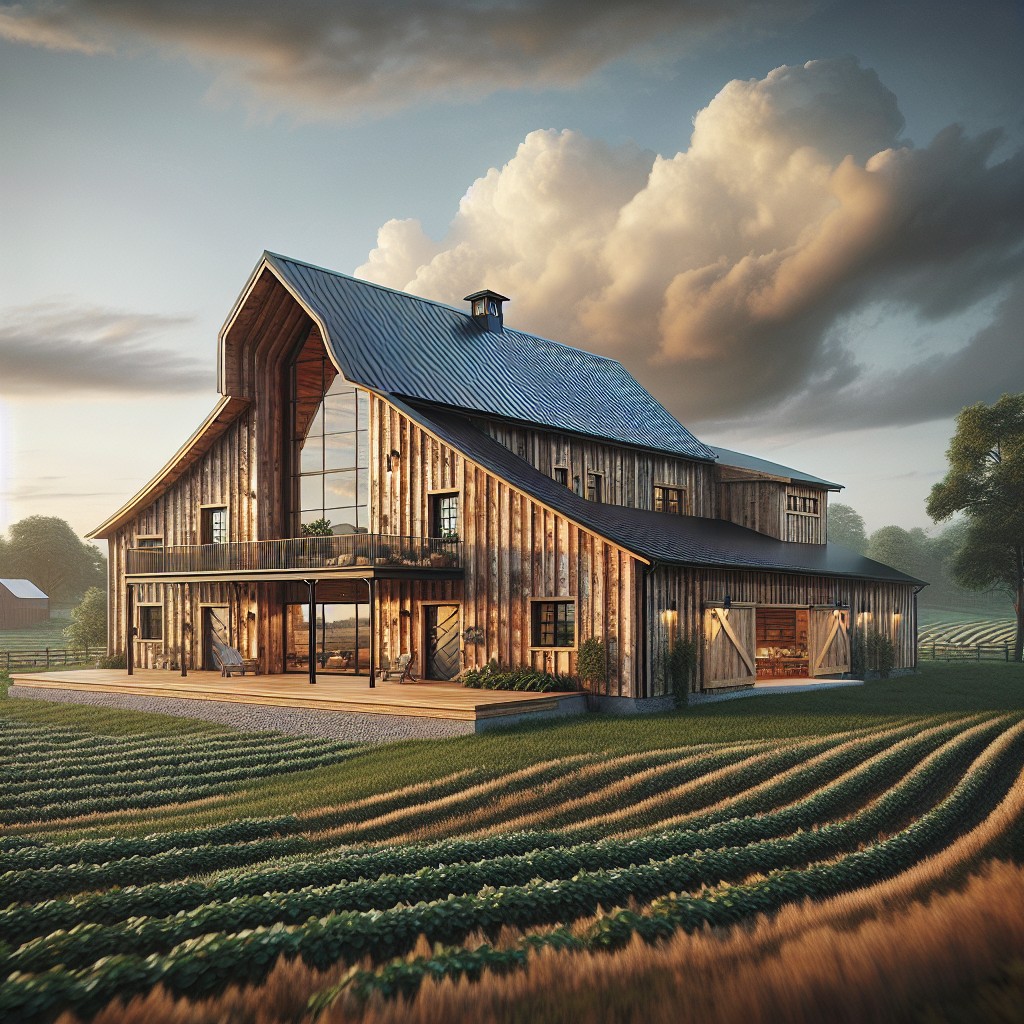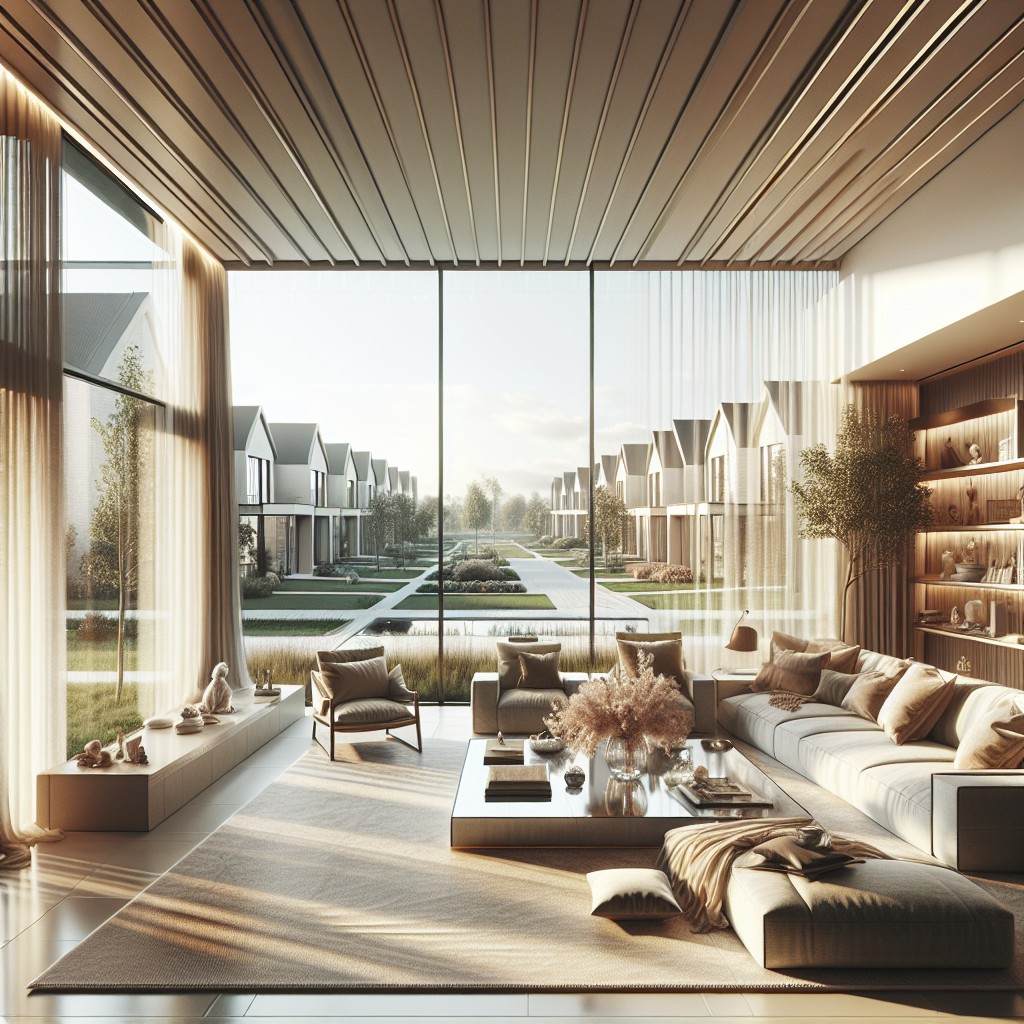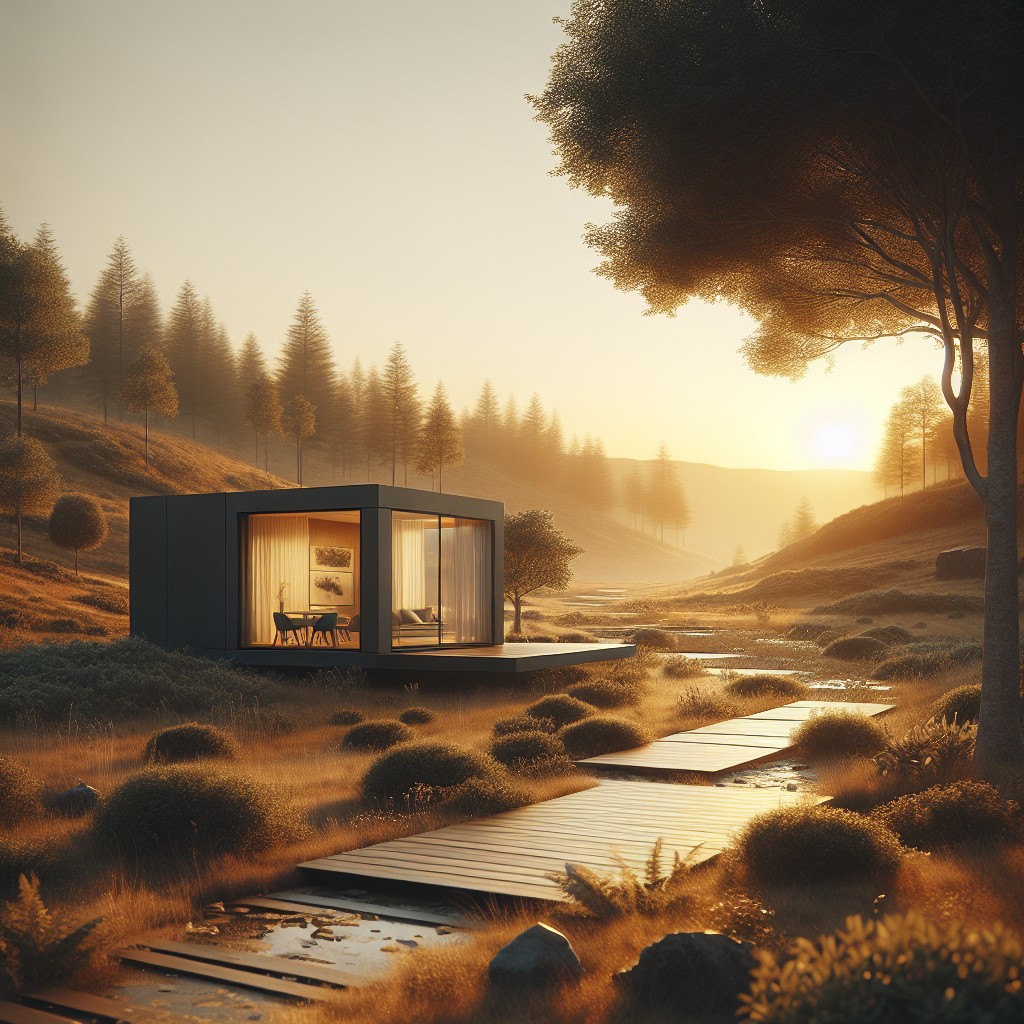Last updated on
Dive into the intriguing world of Zomes, because these unique and sustainable structures are revolutionizing green building concepts.
Key takeaways:
- Zomes consist of faceted sides for strength and aesthetic appeal.
- Their rounded design maximizes spatial efficiency and natural light distribution.
- Zomes offer structural integrity, energy efficiency, and acoustic properties.
- They can be used in residential, commercial, educational, and agricultural settings.
- Zomes are environmentally friendly and can withstand fire and other disasters.
Definition of Zomes

Zomes are a fusion of zoology and geometry, resulting from the combination of dome shapes with zonohedra, a type of polyhedral structure studied in mathematical geometry. Stemming from the basic premise of zooids—or single cells—operating as building blocks in nature, zomes mimic these cellular structures in architectural form. They exhibit the following characteristics:
- Faceted Sides: Unlike traditional domes with continuous curves, zomes consist of several planes, usually in the form of triangles or other polygons, which come together to create a rounded, yet faceted structure.
- Structural Integrity: The geometric design contributes to their strength, making them capable of withstanding environmental stresses such as heavy snow loads or high winds.
- Aesthetic Appeal: The complex patterns created by the intersection of various planes offer a unique aesthetic that stands out from typical architectural forms.
- Spatial Efficiency: Zomes utilize space effectively due to their rounded design, which reduces the need for interior supports and maximizes room within the structure.
- Natural Light Distribution: The angles and facets of zomes are conducive to an even distribution of natural light inside the structure, enhancing energy efficiency.
These attributes underscore the distinctiveness of zomes within the realm of architectural design, blending form with function in innovative and eye-catching ways.
Historical Background of Zomes
The roots of zomes trace back to geometric designs and structural forms found in both nature and various cultural artifacts. These include the intricate patterns of honeycombs and the shapes of certain viruses, which exhibit the efficiency of zonohedral geometry. Inspired by these natural structures, American inventor, designer, and architect Steve Baer developed the modern concept of zomes in the late 1960s. His work built upon the synergy of domes and polyhedra, leveraging the attributes of space-filling forms to create dwellings.
Throughout the 1970s, the zome as a construct evolved, blending the aesthetics of sacred geometry observed in historical buildings with cutting-edge design techniques. This architectural form gained attention for its unique appearance and the harmonious way it embodied mathematical principles, leading to its use in various experimental and residential projects. The emergence of zomes also coincided with a growing ecological consciousness, aligning the structures with the ethos of sustainability and low-impact living. Over time, zomes have been refined, adapting to advancing technology and material science to meet contemporary housing needs while maintaining their intriguing legacy.
Geometric Principles of Zomes
Zomes are a fusion of zones and domes, designed around the beauty and complexity of natural geometry. They are typically based on a series of repeating shapes, such as the lozenge, a rhombus shape which is a key building block in many zome structures. This design leverages the principle of tensegrity which combines tension and compression elements to create a self-supporting framework.
Repeating Patterns: Their structure capitalizes on the repetition of geometric patterns, which not only contributes to the strength of the building but also to its unique appearance.
Golden Ratio: Zomes often incorporate the golden ratio, a mathematical ratio that is frequently found in nature and is aesthetically pleasing to the human eye.
Frequency of Design: The term ‘frequency’ in zome construction refers to the number of subdivisions within the structure, affecting both the shape and the strength of the final construction.
Polygonal Sections: Each section of a zome can be seen as part of a giant polyhedron, with the entire building resembling a faceted sphere.
Natural Curves: Unlike traditional buildings with flat surfaces and sharp angles, zomes mimic the gentle curves found in nature, promoting better airflow and energy distribution within the space.
Benefits of Zomes Construction
Embracing the unique construction of zomes brings a multitude of advantages, including:
- Structural Integrity: Their dome-like shape offers intrinsic strength, distributing stresses evenly, which allows for resilience against natural disasters like earthquakes and heavy snowfall.
Aesthetic Appeal: The fusion of art and architecture in zomes creates visually stunning spaces with flowing lines and dynamic angles, providing an avant-garde aesthetic that stands out.
Acoustic Properties: The design of zomes naturally enhances acoustics, making them ideal for music rooms, studios, or spaces where sound quality is paramount.
Energy Efficiency: Thanks to their shape and volume, zomes often require less energy for heating and cooling, contributing to lower utility costs and a reduced carbon footprint.
Spatial Harmony: The absence of right angles in zomes aligns with the patterns of nature, offering a living space that feels balanced and promotes well-being.
Light Distribution: With opportunities for creative window placement, zomes can achieve optimal natural light diffusion throughout the day, reducing the need for artificial lighting.
These attributes make zomes not only a unique choice for homeowners and architects but also a smart one for those seeking sustainable and resilient living solutions.
Material Choices for Building Zomes
Selecting appropriate materials is critical in the construction of zomes, as it impacts durability, efficiency, and aesthetics. Traditionally, wood is the favored material, providing a balance between strength and ease of work. It imparts a natural, warm feel and blends seamlessly with the zome’s geometric design.
For a modern touch, metals like steel or aluminum can be used, especially in the framework, to enhance structural integrity and resistance to the elements.
For those seeking sustainable options, bamboo emerges as a renewable resource that’s both lightweight and robust. Its low environmental footprint and rapid growth cycle make it an excellent choice for eco-conscious builders. Additionally, incorporating recycled materials into the design not only reduces waste but also adds unique character to each zome.
In regions with harsh weather conditions, the choice of exterior cladding is pivotal. Options like high-performance composites or treated wood can withstand the elements while helping to regulate the interior climate. Insulation, too, commands attention; materials like wool, hemp, or advanced aerogels keep the zome cozy and energy-efficient without detracting from its design.
Window fittings are another crucial consideration. Double or triple-glazed windows with low-emissivity coatings optimize light entry while preserving internal temperatures, not to mention the potential for aesthetically pleasing, custom geometric shapes that conform to the zome’s style.
The linchpin to successful zome construction is the thoughtful combination of materials that align with the owner’s values, climate needs, and aesthetic preferences, ensuring that the structure stands the test of time both functionally and visually.
Thermal Performance and Energy Efficiency
Zomes are notable for their exceptional thermal performance. Their unique dome-like shape facilitates even air circulation, reducing the need for excessive heating or cooling. The interior air naturally rises and falls within the structure, promoting a stable indoor temperature throughout the year.
Thick insulation can be seamlessly integrated into the design, enhancing their energy efficiency. This helps maintain a consistent indoor climate while minimizing heat loss during colder months. Additionally, the design allows for the installation of high-efficiency windows strategically placed to capitalize on passive solar heating, further reducing reliance on non-renewable energy sources.
For those looking to harness renewable energy, zomes provide an optimal structure for installing solar panels due to their angular surfaces, ensuring maximum sun exposure throughout the day. The energy savings realized by these strategies contribute to a reduced carbon footprint, aligning with sustainable living principles.
Application in Residential and Commercial Structures
Zomes’ unique design and structural integrity make them well-suited for both residential dwellings and commercial spaces.
Residential homes: The captivating aesthetics and natural light enhancement due to the dome-like curvature appeal to homeowners seeking a distinctive living space. Their adaptability allows for various sizes, accommodating everything from cozy retreats to expansive family homes.
Commercial use: The striking appearance of zomes can serve as a visual centerpiece for businesses such as cafes, boutique shops, or yoga studios, providing an inviting atmosphere that can attract customers.
Educational and therapeutic environments: The harmonious design fosters a calming environment, making zomes ideal for schools, meditation centers, or wellness retreats where the ambiance can support learning and healing.
Agricultural applications: Greenhouses fashioned as zomes benefit from efficient air circulation and sunlight distribution, encouraging better plant growth while offering a unique visual appeal in a farm setting.
Each application takes advantage of the zome’s durability and energy efficiency, which are intrinsic benefits of their innovative design.
FIREPROOF SANCTUARY
The unique structure of zomes contributes to their exceptional fire resistance. Their dome-like shape, with fewer flat surfaces, minimizes horizontal areas where embers can accumulate—a common issue in traditional buildings during wildfires. By integrating non-combustible materials such as metal, earth, or special fire-resistant wood treatments, zomes enhance their ability to withstand high temperatures, further fortifying their defensiveness against fire.
Fire retardant insulation options also play a key role in safeguarding the interior from flames and heat. Coupled with a strategic placement of windows and vents that can prevent the accumulation of heat, and the potential for a conflagration is significantly reduced.
This design philosophy ensures that a zome’s occupants can take comfort in a space that prioritizes their safety from fires, combining peace of mind with aesthetic appeal and energy efficiency.
EFFORTLESS ELEGANCE
The flowing lines and unique curvature of zomes create an aesthetic that stands out against traditional architecture, exuding a sense of sophistication. This inherent elegance isn’t merely cosmetic; the design harnesses both form and function in harmony.
- Natural Light Maximization: The dome-like structure of a zome allows for ample natural light, reducing the need for artificial lighting and enhancing the space with an airy and open feel.
- Spatial Efficiency: The absence of traditional corners in a zome creates a sense of spaciousness, offering a seamless flow and utilization of interior space.
- Visual Harmony: The recurring patterns and symmetries present in zome construction resonate with our inherent appreciation for beauty, mimicking the repeating forms found in nature.
Harnessing these attributes, zomes provide an ambiance that is both tranquil and visually stimulating, making them a beacon of modern and elegant design.
RESISTANCE THAT REASSURES
Zomes are reputed for their resilience. The unique architectural design offers distinct stability advantages:
- Structural Integrity: The interconnected facets of a zome fortify its frame, distributing loads evenly and reducing stress points.
- Wind Resistance: The curved surfaces allow wind to flow around the structure, minimizing pressure and risk of damage.
- Seismic Performance: Their geodesic nature provides enhanced earthquake resistance, as the interconnected triangles absorb and dissipate energy.
- Durability: Zomes, by virtue of design and choice of materials, often see a longer lifespan with lower maintenance needs compared to traditional constructions.
- Adaptability: The flexible design principle of zomes makes them suitable for various climates and terrains, ensuring they stand firm from arid deserts to snow-laden mountainsides.
Customization Options for Zomes
Zomes adapt to myriad design preferences and functional requirements. Their modularity enables owners to select facets such as size, scale, and the geometric complexity to suit individual taste and site constraints.
Custom glazing options grant the flexibility to maximize natural light or frame specific views, while door and window placements can be tailored to enhance airflow and cross-ventilation.
Interior layouts in zomes are highly customizable, ranging from open-plan living spaces to segmented rooms, thanks to adjustable wall panels. Designers often incorporate unique features such as lofted areas or integrated storage by exploiting the structure’s angles and vertices.
Exterior finishes are equally varied, with possibilities from natural wood to modern composites, allowing zomes to either stand out as architectural focal points or blend seamlessly with their surroundings.
Moreover, integrated technology for smart home systems can be woven into the design from the outset, ensuring that zomes are not only aesthetically unique but also functionally up-to-date.
Environmental Impact and Sustainability
Zomes are championed for their low impact on the environment. The design requires fewer materials than traditional structures due to the efficient use of space and materials inherent to their geometry. They can be constructed using renewable resources such as timber from sustainably managed forests, promoting the use of eco-friendly materials.
Moreover, the unique shape of zomes minimizes waste during construction. The precision required in cutting means materials are used optimally, ensuring that leftover pieces are minimal.
Additionally, zomes often integrate well with natural surroundings, reducing the need for extensive land clearing. Their compatibility with green roofing and solar panels further enhances their sustainability profile by harnessing renewable energy and improving insulation.
By incorporating passive solar design principles, zomes can capitalize on natural heating and lighting, limiting the dependence on fossil fuels for climate control. This harmonious balance with the environment results in a reduced carbon footprint, aligning with green building standards and promoting a sustainable future in architecture.
Building Process of Zomes
The construction of zomes incorporates an intricate pattern of interlocking components, typically following these steps:
1. Design and Planning: A custom geometric plan is created to meet the specific needs of the site and the desires of the inhabitants, ensuring the structure integrates the distinctive characteristics of zomes.
2. Foundation: A stable and level foundation is laid to support the unique load distribution of a zome’s structure, which can vary from traditional buildings.
3. Framework: Using a variety of materials such as wood, metal, or others chosen for their sustainability and performance, the distinct zig-zagging framework is assembled. Precision is key, as the interconnected nature of the design requires accurate angles and lengths.
4. Insulation and Enclosure: After the skeleton is up, insulation is installed—a crucial step for energy efficiency. The exterior is then enclosed with materials that could range from traditional siding to innovative eco-friendly options.
5. Interior Finishing: Interior spaces are finished with sustainable materials and designed to optimize the flow of the unique space. Features such as high ceilings or lofted spaces exploit the potential of zome architecture for a visually appealing interior.
6. Utilities and Systems Integration: Plumbing, electrical, and heating systems are integrated, requiring careful planning to accommodate the unconventional angles and curves inherent in a zome.
Throughout each step, builders must maintain a balance between the zome’s complex geometry and the practicality of creating a livable space. With their unconventional form, zomes challenge traditional building approaches, resulting in structures that are not only striking but are also expressions of mathematical beauty made habitable.
Maintenance and Durability
Zomes, with their unique geometric shapes, are often built using high-quality, durable materials ensuring a robust structure able to withstand environmental stressors. Their maintenance routines, while simple, are important to maximize longevity.
Regular Inspections: A yearly check can help identify potential issues early, such as checking for leaks or damage to the exterior surface.
Sealing and Waterproofing: To protect the wood or other materials used, periodic sealing provides an additional layer against moisture and decay.
Cleaning Gutters and Drainage: Efficient water management is crucial to prevent water buildup around the structure which could lead to dampness issues.
Climate Considerations: Depending on your local climate, specific maintenance may be required, such as additional UV protection in sunny areas or more frequent inspections in regions with heavy snowfall.
Pest Control: Regular checks for termites or other pests that could compromise the integrity of wooden components.
Surface Treatments: Use of stains or paints not only adds to aesthetic appeal but also serves as an extra protective layer against weathering.
Despite these maintenance needs, the resilience of zomes is a testament to their innovative design principles, allowing for enduring stability with comparatively minimal upkeep.
The Future of Zomes in Architecture
Advancements in digital design and fabrication technologies herald new possibilities for zomes in architecture. Architects and engineers are exploring the frontiers of biomimicry, an area where the inherent efficiency of zome structures offers both aesthetic and functional benefits.
1. Innovative Use of Materials: Research continues into new, sustainable materials that can enhance the resilience and environmental footprint of zomes. Expect to see breakthroughs that could allow for even more strength and versatility in design.
2. Integration with Smart Home Technologies: As homes become more connected, zomes are well-positioned to integrate advances in automation, from responsive window systems to energy management sensors, capitalizing on their unique structure for efficiency.
3. Modular and Prefabricated Zomes: With the push for affordable and efficient construction, modular zomes that are built off-site and assembled quickly could revolutionize the speed and cost-effectiveness of sustainable building.
4. Urban and Community Planning: With growing interest in communal living and ecologically considerate development, zomes may play a pivotal role in new urban designs, offering communal spaces that are both functional and inspiring.
5. Disaster-Resistant Structures: The strength and adaptability of zomes make them ideal candidates for disaster-prone areas, meeting the need for buildings that can withstand extreme conditions while maintaining low environmental impact.
By bridging the gap between natural inspiration and modern technology, zomes remain at the forefront of sustainable, innovative architecture, promising intriguing developments in how we design and inhabit spaces in the coming decades.
FAQ
What is a Zome House?
A Zome House is a unique infrastructure that incorporates unconventional geometries, beyond the conventional series of rectangular boxes, into its design, integrating elements from both zonohedron and dome structures.
What are the environmental benefits of living in a Zome house?
Zome houses provide environmental benefits such as reduced energy consumption, minimal waste during construction, and a lighter ecological footprint due to their unique energy-efficient design and use of sustainable materials.
How does the unique structure of a Zome house contribute to its energy efficiency?
The unique structure of a Zome house, characterized by geodesic and biomimetic forms, facilitates energy efficiency by minimizing required building materials and maximizing thermal performance.
What materials are typically used in the construction of a Zome house for sustainability?
The construction of a Zome house typically uses sustainable materials such as straw bale, reclaimed wood, and eco-friendly insulation.
Related reading:
Table of Contents





